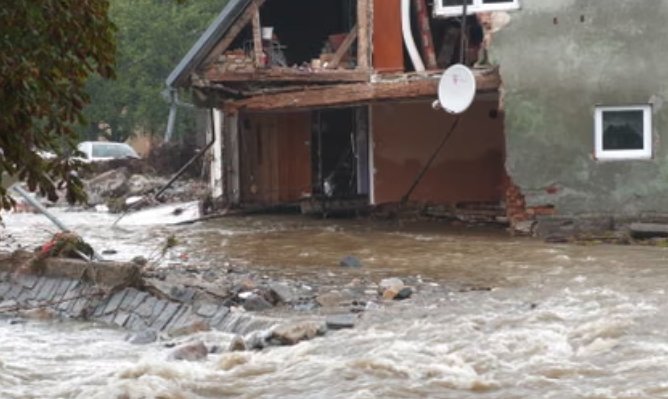Scotland faces a growing flood threat, with watchdogs warning that many at-risk homes may not get needed protection due to funding and leadership failures. A new report from the Auditor General and Accounts Commission highlights how the current system fails to deliver on time, leaving communities vulnerable as climate change worsens flooding.
Report Reveals System Flaws
The joint report, released on August 28, 2025, states that the way money is allocated for flood defenses in Scotland is not fit for purpose. This means projects meant to safeguard homes could be delayed or scrapped altogether.
Experts point out that existing flood schemes are taking longer than planned, with costs soaring past initial estimates. For instance, some major projects now expect to cost over £1 billion, more than double what was first budgeted.
This inefficiency stems from unclear roles among key players like the Scottish government, local councils, Scottish Water, and the Scottish Environment Protection Agency. Without clear leadership, efforts to build defenses lag behind the rising risks.
The report urges urgent fixes to ensure funds reach the right places quickly. It notes that without changes, fewer communities will benefit from protection than hoped.

Rising Flood Risks from Climate Change
Climate change is making floods more frequent and severe in Scotland. By 2080, nearly 400,000 properties could face flood threats, up from 284,000 today.
Recent events show the danger. Storm Babet in October 2023 hit Brechin hard, flooding over 130 homes when the River South Esk overflowed. That storm brought record rainfall, overwhelming defenses built for rare events.
Other areas suffer too. The Whitesands in Dumfries has flooded more than 200 times since records started, showing how repeated events wear down communities.
Warmer air holds more moisture, leading to heavier downpours. Scientists predict this trend will continue, putting more homes, businesses, and farms at risk.
Here are key factors driving higher flood risks:
- Increased rainfall intensity from global warming.
- Sea level rise threatening coastal areas.
- Urban growth in flood-prone zones without proper planning.
Impact on Communities and Economy
Floods bring huge costs to families and the economy. In Brechin during Storm Babet, residents faced evacuation and property damage, with some still waiting for full recovery aid.
The report warns that delays in protection schemes could leave thousands exposed. This affects not just homes but schools, hospitals, and roads, disrupting daily life.
Economically, flooding costs Scotland millions each year in repairs and lost business. For example, agricultural lands suffer when fields flood, hurting food production.
A table below outlines recent flood events and their impacts:
| Year | Event | Location | Homes Affected | Estimated Cost |
|---|---|---|---|---|
| 2023 | Storm Babet | Brechin | Over 130 | £Millions in damages |
| 2024 | Storm Jocelyn | Various | Hundreds | Ongoing recovery costs |
| 2025 | Recent rains | Dumfries | Dozens | Infrastructure repairs needed |
These examples show how unpreparedness multiplies losses. Communities need better resilience to bounce back faster.
Government Response and Future Steps
The Scottish government has responded by saying it will review the report’s findings. Officials claim they are already working to boost flood resilience through grants and taskforces.
After Storm Babet, the government offered £1,500 to affected households and £3,000 to businesses. They also formed a taskforce to coordinate responses.
However, the report calls for more. It recommends clearer funding rules and stronger leadership to speed up projects.
Experts suggest investing in natural solutions like tree planting and wetland restoration alongside hard defenses. These could help absorb water and reduce flood peaks.
Public bodies must collaborate better to map risks and prioritize high-need areas. With climate predictions worsening, action now could save lives and money later.
Challenges in Funding and Implementation
Funding remains a big hurdle. The report notes that costs for flood schemes have ballooned, straining budgets.
Local councils often lack resources to maintain or upgrade defenses. For instance, Angus Council may need to downgrade Brechin’s flood wall after it failed expectations.
Implementation delays come from complex approvals and competing priorities. This leaves gaps in protection, especially in rural spots.
To address this, the report proposes a national strategy with set timelines and accountability measures.
Path Forward for Safer Scotland
Scotland has tools like the Scottish Public Finance Manual to guide spending, but they need better use for flood work.
Building awareness is key. Programs from the government teach residents about flood risks and preparation steps.
As threats grow, combining tech like early warning systems with community input could make a difference.
In the end, fixing these issues requires commitment from all levels. Share this article if you think more action is needed on flood protection, and comment below with your thoughts on how Scotland can better prepare for climate challenges.


















